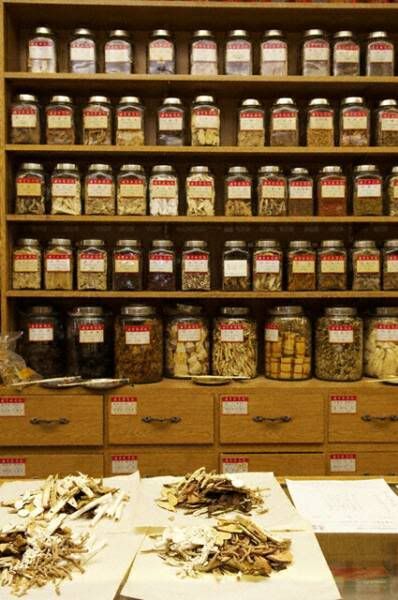Defeating Cold & Flu with Chinese Medicine
In China, every school from grade school through college, offers herbs to the students during the flu season to prevent cold and flu. There are quite a few teas and herbal formulas available for prevention purposes. These anti-cold and flu formulas will be found in every family's medicine cabinet. It would be almost impossible to find a person in China who has never taken one.
Top Antiviral Herbs
Woad Root (Ban Lan Gen) iWoad root tea is the most popular herbal tea to prevent and treat flu in China. In a study of over 11,000 people who were exposed to mumps, the infectious manifestation was forestalled by using a decoction of woad root.
Woad Leaf (Da Qing Ye) shares similar properties with woad root. In a study of 100 people, only 10% of the treatment group that took a woad leaf decoction twice daily had upper respiratory infections during the study period, while 24% of the control group had infections.
 Forsythia Fruit (Lian Qiao) is a pointed, oval-shaped capsule with a hard shell. Because of its anti-viral, anti-bacterial, anti-inflammatory and immunity-enhancing properties, forsythia fruit is widely used to treat common cold, influenza, swelling and pain in the throat, and skin inflammation.
Forsythia Fruit (Lian Qiao) is a pointed, oval-shaped capsule with a hard shell. Because of its anti-viral, anti-bacterial, anti-inflammatory and immunity-enhancing properties, forsythia fruit is widely used to treat common cold, influenza, swelling and pain in the throat, and skin inflammation.
Honeysuckle Flower (Jin Yin Hua) is named "gold-and-silver flower" in Chinese. Research indicates that this flower bud can deactivate the PR8 strain of influenza virus. The study also indicates that honeysuckle works wonderfully to treat other infectious diseases, including pneumonia and viral conjunctivitis.
Baical Skullcap Root (Huang Qin) is the dried root of scutellaria. It is an anti-viral agent, effective against influenza viruses. This herb and its active substance, baicalin, are used in the treatment of upper respiratory infections, either bacterial or viral.
In traditional Chinese medicine, patterns are differentiated according to the imbalances of the body and the causes and stages of the disease. Herbal formulas (combination of herbs) are always recommended by practitioners because they are customized and more effective than single herbs. In future newsletters I will discuss three patterns of cold and flu symptoms, and the appropriate formulas for each type.
- John Charlebois L AC